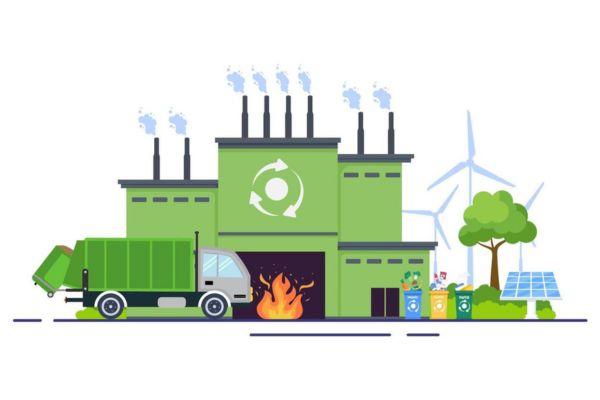According to Cervicorn Consulting, the global waste to energy market size is expected to exceed around USD 81.72 billion by 2034 and growing at a CAGR of 6.47% from 2025 to 2034.
The global Waste-to-Energy (WTE) market is witnessing significant growth, driven by increasing urbanization, rising waste volumes, and the urgent need for alternative energy sources. Governments are enforcing stricter regulations on landfill use, accelerating the shift toward sustainable waste management practices. Climate change concerns and the global transition to renewable energy further support WTE adoption.
Technological advancements—particularly in energy conversion efficiency and emissions control—are also bolstering market growth. Regions like Europe and Asia-Pacific are leading WTE implementation, with countries such as China, India, and Japan investing heavily in infrastructure and technology.
WTE refers to processes that convert non-recyclable waste into usable energy—typically electricity or heat—through incineration, gasification, pyrolysis, or anaerobic digestion. These methods reduce landfill use and mitigate greenhouse gas emissions by preventing methane release from decomposing waste.
Waste to Energy Market Highlights (2024)
- Europe: Largest market share at 41.60%
- Asia-Pacific: Second-largest, at 28.70%
- By Waste Type: Municipal Solid Waste (MSW) leads with 48.10%
- By Technology: Thermal technologies dominate with 81.30%
- By Application: Electricity generation accounts for 56% of total revenue
Waste to Energy Market Trends
1. Technological Advancements
Emerging technologies such as gasification, plasma gasification, and pyrolysis are enhancing energy efficiency and reducing emissions compared to traditional incineration. Integration of AI and robotics in plant operations and waste sorting is improving precision and productivity.
2. Circular Economy Integration
The growing adoption of circular economy principles promotes resource efficiency and waste reduction. WTE plays a crucial role by recovering energy from materials that cannot be recycled, aligning with eco-friendly waste management goals.
3. Rising Demand for Sustainable Energy
WTE offers a consistent energy supply, unlike intermittent renewables like solar or wind. As countries work toward carbon reduction targets, many are integrating WTE into renewable energy frameworks and grid systems.
4. Growing Waste in Developing Economies
Rapid industrialization and urbanization, especially in South and Southeast Asia, are driving municipal solid waste generation. WTE offers a dual benefit in these regions: addressing waste management challenges and bridging energy deficits.
Waste to Energy Market Segmental Analysis
By Waste Type
- Municipal Solid Waste (MSW):
Dominates the market, comprising household and commercial waste. WTE plants utilize MSW to generate energy while significantly reducing landfill use. - Agricultural Waste:
Includes crop residues and animal waste. Anaerobic digestion and biomass incineration turn this waste into bioenergy, supporting rural electrification. - Others:
Covers industrial, hazardous, and medical waste. These types often require advanced WTE methods like pyrolysis or gasification to ensure safe and efficient energy recovery.
By Application
- Electricity Generation:
The primary use of WTE technologies, providing power to grids or on-site facilities. WTE helps offset fossil fuel consumption and contributes to renewable energy goals. - Heat Production:
Waste combustion heat is used for district heating or industrial operations. In several countries, WTE plants are integrated with heating networks for greater energy efficiency.
Waste to Energy Market Regional Insights
Europe: Market Leader
- 2024 Market Size: USD 18.16 billion
- Forecast (2034): USD 34 billion
Europe leads due to robust policy frameworks, public investment, and strict landfill regulations. Countries like Germany, Sweden, and the Netherlands have mature WTE infrastructures and are focusing on advanced technologies. However, public opposition to incineration and strict emissions standards pose growth challenges.
North America: Policy-Driven Growth
- 2024 Market Size: USD 8.82 billion
- Forecast (2034): USD 16.51 billion
The U.S. and Canada benefit from established waste management systems and regulatory incentives for renewable energy. Public concern over landfill use and emissions is fueling WTE adoption, although high capital requirements and a strong recycling culture may limit growth.
Asia-Pacific: Rapid Expansion
- 2024 Market Size: USD 12.53 billion
- Forecast (2034): USD 23.45 billion
Urbanization, industrial growth, and rising energy demand are propelling WTE adoption in countries like China, India, and Japan. Government-backed initiatives and sustainability goals are encouraging investments. However, inconsistent regulations and limited technical expertise in some regions are ongoing challenges.
LAMEA: Emerging Opportunities
- 2024 Market Size: USD 4.15 billion
- Forecast (2034): USD 7.76 billion
LAMEA is in early development, with countries like Brazil, South Africa, and the UAE exploring WTE to meet growing urban energy needs. International funding and strategic partnerships are aiding progress, but economic instability, infrastructure gaps, and public skepticism are key hurdles to overcome.

















